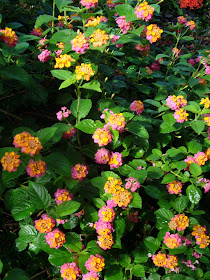Dr Abe V Rotor
Living with Nature - School on Blog
Paaralang Bayan sa Himpapawid with Ms Melly C Tenorio
738 DZRB AM 8 to 9 Evening Class, Monday to Friday
Smoke belching vehicles - unstoppable
Dumpsites - breeding place of disease, poisonous and obnoxious gases
Bad air days (BAD)
Bad air accumulates and moves, such as the case over Hong Kong. Bad air moves in two directions - to Bombay, India; and to neighboring Guangdong where pollution meets and mixes over the Pearl River and forms a shroud as it meets the sea. Similar cases occur over Beijing, Tokyo and San Francisco. The stale air hangs as an inversion layer practically choking the city.
Rapid economic growth has led to record levels of pollution, producing filthy air rising and spreading over highly industrial centers and densely populated cities. Here power plants, factories and vehicles release pollutants into the air, and as the sun heats up the ground, the polluted air rises. But polluted air cools quickly over water and sinks to the surface and disperses. Without strong wind to clear it away, the pollution mix can build up over time, leading to BAD (bad air days).
What is in the polluted air?
Sulfur Dioxide is produced by coal-burning power plants and heavy industry. Effects: reduces lung function, exacerbates wheezing and shortness of breath. Builds acid rain with other gases.
Nitrogen Dioxide comes from emissions of vehicles and power plants. Effects: helps form smug, exacerbates asthma and increases chances of respiratory infections.
Respirable suspended particulates. These tiny particles are created chiefly by diesel exhaust and coal-burning power plants. Effects: can penetrate deep into lungs and aggravate serious respiratory and cardiovascular diseases.
Ozone is formed by the reaction in sunlight of volatile organic compounds and CFCs that primarily come from cars, and household byproducts. Effects: causes chest pain and coughing, aggravates asthma.
Hydrogen sulfide, ammonia gas, elevated CO2 from piggeries and ranches, swamps and polluted rivers and lakes. Algal bloom contributes significant amounts of these gases.
Suspended dusts as what happens during sandstorms and volcanic eruptions, such as what happened during the Pinatubo eruption, and recently, in Iceland and Brazil. Remember the Dust Bowl of the Dakotas in the thirties when the air became was loaded with dusts which lasted for weeks.
Dioxin, the most poisonous substance ever formulated by man is in the air since plastic was discovered. Pastics are the most popular material used in the household, industry and agriculture. Dioxin is produced by burning plastics. With increasing use of pesticides, the air is getting thicker with chlorinated hydrocarbons, organophosphates, and other harmful residues.
Radiation is the result of fallout from nuclear accidents like what happened in Fukushima, Japan, in March this year, and in Chernobyll in Kiev twenty years ago, not to mention the Three-Mile nuclear incident in the US in the eighties.
Pathogens - Spores of disease-causing organisms that infect not only humans but animals and plants as well, ride on air current, and on particulates suspended in air. Thus the hypothesis that epidemic diseases move on air has strong scientific evidences.
Pathogens - Spores of disease-causing organisms that infect not only humans but animals and plants as well, ride on air current, and on particulates suspended in air. Thus the hypothesis that epidemic diseases move on air has strong scientific evidences.
Are we safe inside our schools and houses?
Bad air builds up surepticiously in airconditioned halls and rooms. Don't be deceived by the comfort of coolness lulling you to sleep. Defective and leaking aircon units virtually make the room a gas chamber. There are cases of death due to poisonous gases from leaking aircon.
Defective exhaust or overload results in buildup of Carbon Dioxide and its more poisonous cousin, Carbon Monoxide (CO).
When students become inattentive and drowsy, yawning, complaining of headache, nausea, and the like, suspect the air conditoning unit as the culprit - and the classroom heavy with bad air.
As a teacher, when confronted with this situation, immediately institute these measures.
- Give the class a break. A recess outside the classroom is preferred.
- Open all windows and doors
- Check the aircon, the exhaust fan with the aircon technician
- Inform management.
- Give sufficient break during brownout
Solution: improved stove, more efficient with least pollution. Improved stoves are subsidized by governments such as in China and India, which also back us the campaign by proper education, and strict pollution control laws.
And lastly, have trees and plants around the house, on backyards and sidewalks, on idle lots and parks to increase Oxygen level and cool the surroundings. But never keep plants inside your house, and never in your bedroom. At night plants give off CO2 as they, like other organisms, respire. In our knowledge of photosysthesis, the dark phase of this biological process takes place at night. ~









































.jpg)




